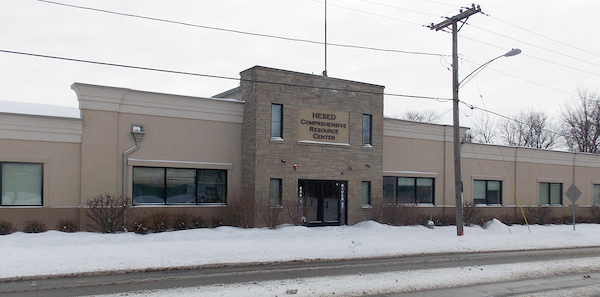The changing makeup of suburbia
March 5, 2014
Hesed House’s Comprehensive Resource Center (CRC) offers a range of social services. (News Bulletin photo).
The poor now make up an estimated 40 percent of residents outside the city and services to help are scattered or limited. A DePaul University professor says a one-stop Aurora project may help provide some answers.
America’s suburbs are home to a fast-growing number of poor families. Since 2000, the number has skyrocketed by 65 percent, according to a report co-authored by Brookings Institution’s Metropolitan Policy Program. In the Chicago suburbs, 40 percent of families live below the poverty line.
The reasons for this increase in suburban poverty vary. Some families are casualties of large-scale public housing demolitions occurring in the nation’s cities. Others moved from the cities to the suburbs to be near their families. And many longtime suburban residents have been driven into poverty by rising foreclosure and unemployment rates, courtesy of the Great Recession.
Suburban communities aren’t equipped to address the needs of this new demographic. Neither are nonprofit and philanthropic organizations in the suburbs.
Suburban social service providers, sparse in number when compared to urban areas, are incapable of meeting the needs of the growing poor population with their current level of financial and human resources. Research on suburban nonprofits conducted by Scott Allard of the University of Chicago found that there are fewer suburban nonprofit organizations compared to urban nonprofits and that funding cuts to suburban nonprofits resulted in a reduction or elimination of social services for the poor. Simply put, the suburbs are becoming poorer and services aimed at alleviating family poverty are just as poor.
For residents, the biggest single problem in the suburbs is transportation. Unlike the sophisticated transit networks in urban centers that enable people without cars to access social services, employment and businesses, suburban public transportation is severely limited. Suburban social services agencies are dispersed across miles. What would be a half an hour trip in the city takes most of the day in the suburbs.
The time has come to take action. In the course of two decades studying issues relating to urban poverty, housing, and community development, I have come to appreciate the effective operation of “one-stop shops” to provide social services. They effectively bring a whole host of much needed services and resources to the people who require them most. A one-stop shop system in the South Bronx, where I was a service provider, helped hundreds of people access education, job training and placement programs and government assistance officials. Similar one-stop shop systems were developed through the supportive service agencies I worked for in East Los Angeles and Houston’s Fifth Ward neighborhood. One-stop shop models proved successful in these cities and can be equally successful in suburban communities where poor households need easy access to services.
An experiment with such a model is under way near Chicago in the city of Aurora, where a range of social service providers occupy
The Comprehensive Resource Center (CRC), a centrally located facility across the street from Hesed House, the second-largest homeless shelter in Illinois. The CRC is home to more than 15 partner agencies and organizations, including drug counseling and veterans’ services. In 2013, CRC partners helped approximately 2,500 individuals receive medical treatment, counseling, legal services, job training or housing, among other services.
While this collaboration was developed to address the needs of residents of Hesed House, the concept has a far broader application. The CRC one-stop shop model can be replicated and placed in established poor suburban neighborhoods. That will effectively bring much-needed services to the families requiring them.
With the suburbs now home to a fast-growing number of the nation’s poor families, non-profit and philanthropic organizations need to refocus their efforts and channel their funding in ways that recognize the new demographics of poverty.
A step in the right direction would be supporting efforts to bring together social services so poor people in the suburbs can more easily access them.
-—Article by Adrienne M. Holloway, an assistant professor in the School of Public Service at DePaul University in Chicago. She is currently a Public Voices Faculty Fellow with the OpEd Project.



